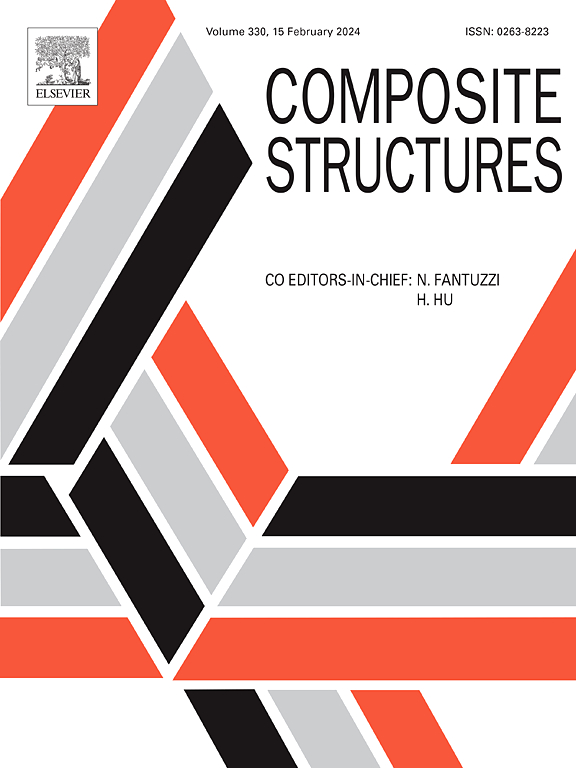A viscoelastic micromechanical damage model for multiphase porous composites: Model development and application
IF 6.3
2区 材料科学
Q1 MATERIALS SCIENCE, COMPOSITES
引用次数: 0
Abstract
Multiphase porous composites are widely used in engineering applications, but their complex microstructure poses significant challenges in predicting their mechanical performance. To address this issue, a novel viscoelastic micromechanical damage constitutive model for multiphase porous composites is proposed. The model comprehensively incorporates the material’s multiphase heterogeneity, random damage evolution, and viscoelastic properties. Specifically, the composite is represented using an (n + 1) phase model, with the viscoelastic behavior of the matrix characterized by the Prony series, and the random damage evolution modeled using both Log-normal and Weibull distributions. The model’s validity is confirmed through uniaxial compression test results on asphalt-calcareous sand mixtures with varying asphalt content and calcareous sand gradations. Additionally, sensitivity analyses are conducted on key parameters, including aggregate modulus, asphalt modulus, asphalt content, air voids content, particle size, viscous parameters, strain rate and damage statistical parameters. The results reveal that enhancing the strength of calcareous sand, selecting stiffer asphalt, and reducing asphalt and air void contents effectively improve the strength of asphalt-calcareous sand mixtures. This developed model provides a robust framework for predicting the mechanical performance of various types of multiphase porous composites, expanding its potential applications in engineering practice.
多相多孔复合材料粘弹性细观力学损伤模型:模型开发与应用
多相多孔复合材料在工程中得到了广泛的应用,但其复杂的微观结构给其力学性能的预测带来了很大的挑战。针对这一问题,提出了一种新的多相多孔复合材料粘弹性细观损伤本构模型。该模型综合考虑了材料的多相非均质性、随机损伤演化和粘弹性等特性。具体来说,复合材料使用(n + 1)相模型表示,其中矩阵的粘弹性行为由proony级数表征,随机损伤演化采用对数正态分布和威布尔分布建模。通过不同沥青掺量和石灰砂级配的沥青-钙质砂混合料单轴压缩试验结果,验证了该模型的有效性。对集料模量、沥青模量、沥青含量、空隙率、粒径、粘性参数、应变率、损伤统计参数等关键参数进行敏感性分析。结果表明,提高钙质砂的强度、选择较硬的沥青、降低沥青和空隙含量能有效提高沥青-钙质砂混合料的强度。该模型为预测多相多孔复合材料的力学性能提供了一个可靠的框架,扩大了多相多孔复合材料在工程实践中的潜在应用。
本文章由计算机程序翻译,如有差异,请以英文原文为准。
求助全文
约1分钟内获得全文
求助全文
来源期刊

Composite Structures
工程技术-材料科学:复合
CiteScore
12.00
自引率
12.70%
发文量
1246
审稿时长
78 days
期刊介绍:
The past few decades have seen outstanding advances in the use of composite materials in structural applications. There can be little doubt that, within engineering circles, composites have revolutionised traditional design concepts and made possible an unparalleled range of new and exciting possibilities as viable materials for construction. Composite Structures, an International Journal, disseminates knowledge between users, manufacturers, designers and researchers involved in structures or structural components manufactured using composite materials.
The journal publishes papers which contribute to knowledge in the use of composite materials in engineering structures. Papers deal with design, research and development studies, experimental investigations, theoretical analysis and fabrication techniques relevant to the application of composites in load-bearing components for assemblies, ranging from individual components such as plates and shells to complete composite structures.
 求助内容:
求助内容: 应助结果提醒方式:
应助结果提醒方式:


